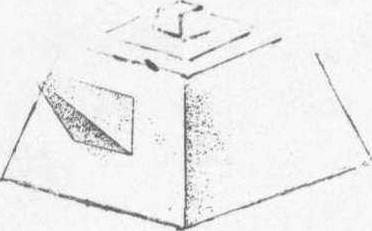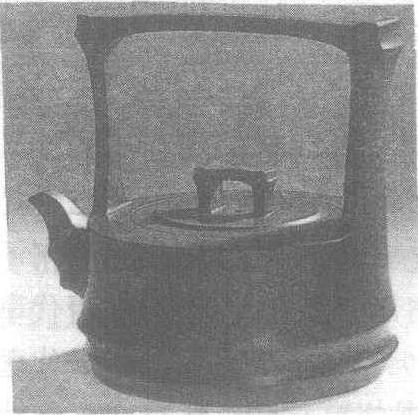紫砂陶
多为日用产品,有盆类、壶类、瓶类,茶具、酒器文具等:工艺品有看盘、壁挂等种类繁多,造型各异,千姿百态,琳琅满目。紫砂陶器对画面的设计、设色、雕刻精益求精。运用浮雕,印花、透雕等工艺手法,创制彩釉堆绘新工艺,精制各色花盆。用彩釉堆绘的花盆是最具代表性的产品,色泽光亮,立体感强,用来养花则堆绘图景与盆内红花绿叶相互映衬,格外高雅。
紫砂陶
我国独有的一种陶器,以江苏宜兴的最为典型。紫砂原料是一种深藏于岩石层下的天然陶土,有紫泥、红泥和绿泥等,以紫泥最为多见,实则是深赭红色,但习惯于称为紫砂,其他颜色的也称为紫砂。手工成型的紫砂陶,制作精致,形式多样。烧成后的紫砂陶表面光挺,并有小颗粒状的质地,呈现一种砂质效果,所以称为紫砂陶。紫砂陶最早始于宋代,到明代已经发展成熟,形成独特的风格,至清代更加发展,名家辈出。主要制品有茶壶、花盆等品种。在历史上只有江苏宜兴鼎蜀镇烧造紫砂陶。1949年以后,浙江长兴也有所发展。紫砂陶有很高的艺术性,近30年来有很大的发展,是我国传统陶瓷艺术中不可多得的品种。

紫砂陶Zishatao
我国陶瓷中的一种无釉陶器,产地在江苏省宜兴丁山镇。紫砂陶器是用一种深藏于当地岩石层下的天然陶土制成的。这类陶土有红泥、紫泥、黄泥等多种颜色,其中以紫泥为最多见,实则所谓紫是深红色,但习惯于称为紫砂,其它颜色泥制作的同类产品也叫紫砂。紫砂陶器大部分都是手工成型制作的,加工精致,形式多样,富有艺术情趣。由于紫砂陶器在烧成后,器表光挺,质感效果丰富,表面平整之中有小颗粒状的起伏,呈现一种砂质效果,光而不亮,砂而不涩,极为耐人寻味,对各种造型都有很强的表现力。紫砂陶还具有良好的性能,所制茶壶泡茶不失香味,盛暑贮茶,隔夜不馊。还有耐冷热急变性能好,能经受温度突变而不易破裂,并有一定的保温性能。从出土的文物资料证明,紫砂陶最早始于宋代,到明代已经发展成熟,形成独特的风格。清代紫砂更加发展,名家辈出,留下了许多优秀的作品。紫砂陶器主要有茶壶、花盆、文具和装饰品。1949年以后,紫砂陶得到很大发展,培养艺徒,总结经验,国内各地的文人和艺术家参与紫砂陶的设计创作,使其在造型和装饰方面都有所提高,出现了许多优秀作品,得到国内外的一致好评。

紫砂陶
紫砂陶
用紫砂泥制作的无釉细陶器。紫砂是一种质地非常细腻可塑性很强的天然粘土,主要有紫泥、绿泥和红泥三种。紫砂陶以其优良的质地、精湛的制作技艺取胜,造型千变万化,“圆无一相,方非一式”,以茶壶最具特色。为充分体现紫砂的材质之美,器表多不加装饰,有的以刀代笔,刻划文字与简洁的纹饰,集书画篆刻等装饰艺术于一体,古朴雅致。紫砂陶的著名产地在江苏宜兴,始于北宋,盛于明清,现代仍盛烧不衰。
紫砂陶
是用紫砂泥、红泥或绿泥等制成的质地坚硬的陶制品。紫砂质地细腻,含铁量高,可烧制成无釉细陶器。颜色有米黄、栗色、朱砂紫、紫黑、墨绿等。紫砂陶创于宋代,从南京明嘉靖十二年(1533)司礼太监吴经墓中出土的有紫砂提梁壶。盛于明中期,主要作茶具,以宜兴产品最为著名。其优点:泡茶不走味,贮茶不变色,盛暑不易馊,耐热性能好,能经受温度的突变,且能保温,是闻名于世的陶制茶具之一种。宜兴紫砂花盆具有种花不易烂根的特点。明万历时期,有用紫砂制作的雕塑和其他工艺品。至清代,紫砂制品有陈设品和玩具,品种繁多。紫砂陶除主要产地江苏宜兴外,还有广西坭兴,浙江长兴、嵊县,江苏高淳,陕西延安等。紫砂制品技术精湛,色泽朴雅,富有民族特色。
紫砂陶
用一种质地细腻、含铁量高的特殊陶土制成的无釉细陶器,多呈深紫、赤褐、棕黄等色。是博山、临沂。梁山等地传统陶器品类之一,因历代以壶类为多,故民间俗称“红泥壶”。《续修博山县志》(民国二十六年版)记有山头陶瓷“制有……红泥壶等颇细致”。其渊源则可远溯元、明。用紫砂陶壶盛茶水,虽炎夏也能数日不馊。近30年间,山东紫砂陶器在花式品种上都有新的发展,除茶具的款式不断创新外,花盆的造型也是千姿百态;文房用具、艺术挂盘及绰约多姿的各种陈设观赏品也相继问世,还被作为一些名牌优质酒的包装容器,广为流传。